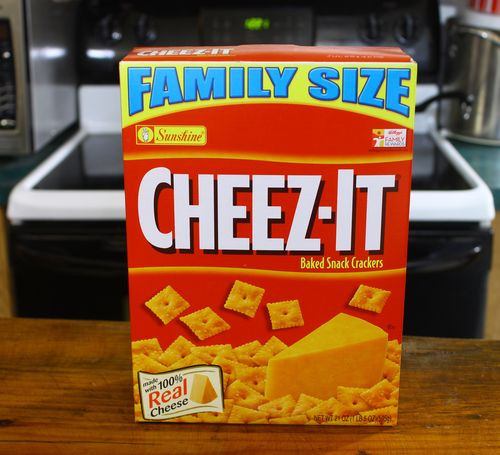Teen Trades ADD Meds For Cheez-Its And Gets Expelled; Mother Says Behavior Is A ‘Manifestation’ Of His Disability

A 15-year-old boy with attention deficit disorder has been expelled from the Illinois Mathematics and Science Academy (IMSA) for allegedly trading his medication for bags of Cheez-its. Now, his mother is seeking an injunction prohibiting IMSA from expelling her son because of his disability.
Declaring her son only made the exchange in order "to help his fellow student,” she also claims his misconduct is "likely a manifestation of his disability," a condition acknowledged by IMSA officials, as the school nurse is the adult who dispensed his pills. The school’s website states it enrolls academically talented Illinois students (grades 10-12) in its advanced, residential college preparatory program and further suggests this environment appears to "uncover" cognitive issues "that may indicate a preexisting condition like mild to moderate ADD."
Though the mother appealed when IMSA first expelled him, the school did not buy her arguments, Courthouse News reported. Now, she is seeking both a restraining order and injunction prohibiting IMSA from dismissing her son. Despite accusations of selling his medicine to another student, the teen promptly admitted it, his mother says, adding he only made the trade “in an effort to help his fellow student do better in school.” Along with bags of Cheez-its and other chips, her son also received $3 payments in exchange for his unspecified pills. The going price for Ritalin on the street is anywhere from $1 to $20 per pill, according to the Foundation for a Drug Free World.
Kiddie Cocaine
Many are surprised to learn the most commonly prescribed medications for ADD or ADHD (attention deficit hyperactivity disorder) are stimulants, which appear to improve the signs and symptoms of hyperactivity, counter-intuitive though this may be. Among the pharmaceutical drugs routinely prescribed to children are methylphenidate (Concerta, Metadate, Ritalin, other brands), dextroamphetamine (Dexedrine), dextroamphetamine-amphetamine (Adderall XR) and lisdexamfetamine (Vyvanse).
The number of stimulant prescriptions have spiked over the past 25 years. The Foundation for a Drug Free World estimates five million scripts were written for stimulants in 1991 compared to nearly 35 million in 2007. Nearly four percent of twelfth graders reported having used Ritalin without a prescription at least once in the past year. Worse, since 1995, Ritalin has appeared on the Drug Enforcement Administration’s list of “most-stolen” medications. In fact, one of its street names is “kiddie cocaine.” After reviewing the results of animal and human studies, the DEA concluded Ritalin and cocaine “produce effects that are nearly identical.” Ritalin is listed as a Schedule II substance under the Controlled Substances Act, meaning it is considered to have a high potential for abuse and may lead to severe psychological or physical dependence. Methamphetamine and cocaine are two other schedule II substances.
Published by Medicaldaily.com



























